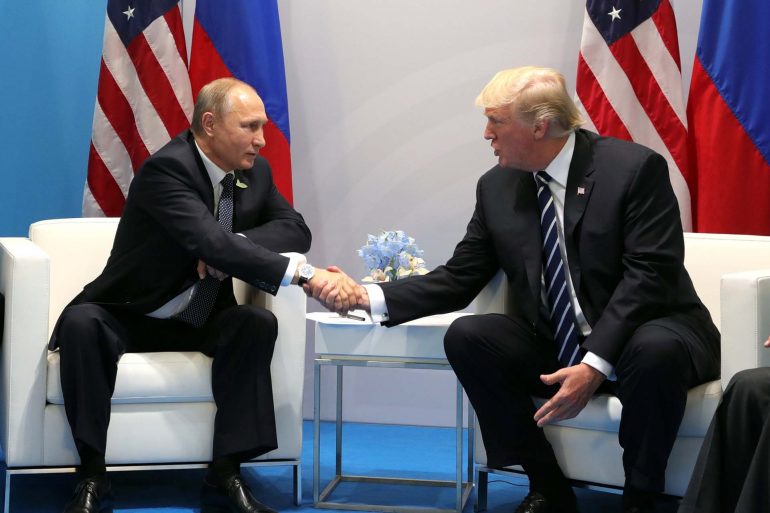There are a number of reasons why worldwide economic conditions are important to us in Montana. First of all, a large part of the Montana economy is dependent on commodities – and the recent collapse of commodity prices was mostly due to changes in world demand. Secondly, some of our largest manufacturing firms rely on the world market, in particular Applied Materials in Kalispell and REC Silicon in Butte. Finally, our wheat farmers sell much of their crop on the world market. Led by the U.S., most regions of the world are now growing. Before we look at the world view, let’s quickly summarize national and state economic trends.
United States and Montana
There was an explosion of optimism after the presidential election in November 2016. We saw surges in indices of sentiment in consumer and business surveys, such as the University of Michigan’s Survey of Consumer Confidence, and a renewed bull market in stocks with the S&P 500 Index up about 10 percent right after the election. The actual economic data reports more modest increases with overall growth continuing in the 2 percent range.
Since then, the U.S. economy has returned to full employment with the current unemployment rate hovering a little less than 5 percent. This suggests that there is not a large pool of unemployed workers who could fill jobs if demand increases, although the labor force participation rate could rebound and provide some manpower relief. Therefore, the U.S. Federal Reserve will probably continue raising interest rates to keep inflation minimal.
U.S. manufacturing has been a bright spot during the recovery from the trough of the Great Recession. Lower oil prices and an abundance of cheap natural gas have kept costs low and provided opportunities for new products and production facilities. A recovering housing market, particularly in multi-family facilities, is stimulating the demand for building materials, furniture and appliances. But there are uncertainties with manufacturing exports due to the rising value of the dollar, slow worldwide growth and the potential for trade-dampening policies in several countries.
In Montana, low oil prices continue to dampen the economy in the eastern part of the state and a drop in agricultural prices has impacted farms and ranches statewide. Consequently Montana’s overall growth rate in 2016 was less than 2015. The energy and agricultural sectors are not projected to improve markedly in the near future and economic growth may be only slightly above that of 2016.
Gallatin County stands out as the fastest growing community in the state, with Flathead County a bit behind. Lewis and Clark and Cascade counties have posted modest growth. Even Missoula and Ravalli counties in the western part of the state have started to turn upward. New and expanded manufacturing establishments are a major factor in the improved conditions in Cascade and Missoula counties.
Europe and the Eurozone
Despite the uncertainty, due to the upcoming election in Germany and Britain’s exit from the EU, overall indicators are stronger this year than last. Almost all areas are posting positive growth, as compared to declines last year in some debt-ridden countries.

Germany remains the growth leader and France lags a bit behind. Countries such as Italy and Spain are growing, but still face tight credit conditions. Unemployment remains high in certain countries, but has begun to decline. Unemployment rates are still near 20 percent in places such as Greece and Spain, but down from the 25 to 28 percent reported four or five years ago.
The U.K. remains a big unknown. A new recession and rising unemployment that some predicted would immediately follow Brexit has not occurred, but the pound sterling remains weak, giving some assist to exports and deterring imports. A disintegration of the U.K. is possible if there is a Scottish independence vote. Future trade negotiations with the EU may get testy.
Hanging over the entire region is the potential for an energy crises. The unresolved situation between Russia and Ukraine could result in a sharp drop in energy supplies to Western Europe and a corresponding rise in prices.
South America
The South American economy should show slight growth and Moody’s Analytics projects an acceleration in 2018. Commodity prices have strengthened a bit and the Brazilian economy will enter positive territory after two years of declines. Venezuela’s economy remains a basket case.
Brazil, the largest economy in South America, declined in 2015 and 2016. It has implemented expansionary fiscal and monetary policies, but the effectiveness has been limited by high inflation, a lack of trust in the private sector and a growing political crisis. Argentina is expected to grow after economic reforms take hold and private investment and government spending rebounds. Venezuela continues to be plagued by low oil prices, rampant inflation and political instability.
Mexico
The Mexican economy decelerated because new reforms did not stimulate investment as much as expected. Low oil prices remain a concern and U.S. policies under the new administration may negatively impact future investments from the North.
India
A long-awaited nationwide tax reform (a GST-goods and services tax) went into effect in July. Theoretically, this will replace a bewildering array of state taxes and improve the efficiency of the Indian economy. But the proposed GST is itself complex and its implementation may be fraught with difficulties.
China
Reliable economic data for the Chinese economy remains problematic, but the news is not good. Official statistics show only a moderate deceleration to 7 to 8 percent annual growth rate. Private non-government sources paint a much darker picture, with these estimates showing annual increases in the 2 to 3 percent range. There is some concern that an unstable housing and construction cycle may be underway and a policy mistake may have major repercussions.
Japan
Japanese consumers are feeling more buoyant as improved employment conditions and a rising stock market boost sentiment. A pickup in global demand and a weak yen continue to support the economy. Exports are expanding at a double-digit rate for the first time in over two years, pushing the trade surplus to levels last seen in 2010. Weaknesses that plagued recent growth have also carried over to this year despite the continuous fall in unemployment.
Canada
The pessimism resulting from the oil price drop is over and there was solid growth in late 2016 and early 2017. The labor market continues strong and a competitive exchange rate have helped exports. Low inflation and the need for a competitive exchange rate will keep monetary policy accommodative.
The overall world outlook is more positive than last year. Global economic growth will be about 2.6 percent in 2017 and Moody’s Analytics projects it will accelerate to 2.9 percent in 2018. The prominent risks on the downside are:
- The impacts of Brexit are still unknown.
- The refugee crisis is far from over.
- The perennial instability in the Middle East is just short of explosive.
- Economic growth in emerging markets is very uneven.


